Balkinization
an unanticipated consequence of
Jack M. Balkin
Balkinization Symposiums: A Continuing List
E-mail:
Jack Balkin:
jackbalkin at yahoo.com
Bruce Ackerman
bruce.ackerman at yale.edu
Ian Ayres
ian.ayres at yale.edu
Corey Brettschneider
corey_brettschneider at brown.edu
Mary Dudziak
mary.l.dudziak at emory.edu
Joey Fishkin
joey.fishkin at gmail.com
Heather Gerken heather.gerken at yale.edu
Abbe Gluck abbe.gluck at yale.edu
Mark Graber
mgraber at law.umaryland.edu
Stephen Griffin
sgriffin at tulane.edu
Jonathan Hafetz
jonathan.hafetz at shu.edu
Jeremy Kessler
jkessler at law.columbia.edu
Andrew Koppelman
akoppelman at law.northwestern.edu
Marty Lederman
msl46 at law.georgetown.edu
Sanford Levinson
slevinson at law.utexas.edu
David Luban
david.luban at gmail.com
Gerard Magliocca
gmaglioc at iupui.edu
Jason Mazzone
mazzonej at illinois.edu
Linda McClain
lmcclain at bu.edu
John Mikhail
mikhail at law.georgetown.edu
Frank Pasquale
pasquale.frank at gmail.com
Nate Persily
npersily at gmail.com
Michael Stokes Paulsen
michaelstokespaulsen at gmail.com
Deborah Pearlstein
dpearlst at yu.edu
Rick Pildes
rick.pildes at nyu.edu
David Pozen
dpozen at law.columbia.edu
Richard Primus
raprimus at umich.edu
K. Sabeel Rahmansabeel.rahman at brooklaw.edu
Alice Ristroph
alice.ristroph at shu.edu
Neil Siegel
siegel at law.duke.edu
David Super
david.super at law.georgetown.edu
Brian Tamanaha
btamanaha at wulaw.wustl.edu
Nelson Tebbe
nelson.tebbe at brooklaw.edu
Mark Tushnet
mtushnet at law.harvard.edu
Adam Winkler
winkler at ucla.edu
Compendium of posts on Hobby Lobby and related cases
The Anti-Torture Memos: Balkinization Posts on Torture, Interrogation, Detention, War Powers, and OLC
The Anti-Torture Memos (arranged by topic)
Recent Posts
Should we Really Have Relied on Cost-Benefit Analysis? A Response to Ian Ayres, Yair Listokin, Robert Schonberger, and Zachary Shelley
Just A Few Blogs
ACS Blog
Alas, a Blog
Althouse
Arts and Letters Daily
Atrios (Eschaton)
Bill of Health
Buzzflash.com
Buzz Machine
Cato at Liberty
Juan Cole (Informed Comment)
Concurring Opinions
The Constitution in 2020
Corrente
Crooked Timber
Daily Howler
Daily Kos
Dana Boyd
Brad DeLong
Digby (Hullabaloo)
Discriminations
Daniel Drezner
Kevin Drum (Mother Jones)
Electrolite
En Banc
Eunomia (Daniel Larison)
Fafblog
Michael Froomkin (Discourse.net)
GovLab (Beth Noveck)
Rick Hasen (Election Law)
History News Network
How Appealing
Ignatz (Sam Heldman)
The Importance of (Ernie Miller)
Infolaw
Instapundit
International Economic Law and Policy Blog
IntLawGrrls
Jacob Levy
Jesus' General
Jurisdynamics
The Kitchen Cabinet
Mark Kleiman
Law Blog Central
Larry Lessig
Lawyers, Guns and Money
Liberal Oasis
Brian Leiter's Law School Reports
The Leiter Reports
Marginal Revolution
Megan McArdle
Memeorandum
Metafilter
Mirror of Justice
The New Republic
Newseum
No More Mister Nice Blog
Brendan Nyhan
Opinio Juris
Orcinus
The Originalism Blog
Pandagon
Passport (Foreign Policy)
Overcoming Bias
Political Animal (Washington Monthly)
Political Theory Daily Review
Political Wire (Taegan Goddard)
The Poor Man
Virginia Postrel
Prawfsblawg
Public Reason
Jonathan Rauch
Raw Story
Redstate
ReligiousLeftLaw.com
Reporters Committee For Freedom of the Press
Reproductive Rights Blog
Rothman's Roadmap to the Right of Publicity
SCOTUS Blog
Seeing the Forest
Clay Shirky
The Shifted Librarian
The Situationist
Larry Solum (Legal Theory)
Andrew Sullivan
Talking Points Memo
Talk Left
Tapped
Tbogg
TechPresident
The Paper Chase (Jurist)
Tom Paine
Tom Tomorrow (This Modern World)
Eve Tushnet
Uggabugga
University of Chicago Law School Faculty Blog
Unqualified Offerings
The Volokh Conspiracy
War and Piece (Laura Rozen)
Wampum
Oliver Willis
Wonkette
Written Description
Matthew Yglesias
Yin
Your Choice of Feeds
1. XML
powered by
2. Atom Feed
3. RSS 2.0
Wednesday, June 10, 2020
Should we Really Have Relied on Cost-Benefit Analysis? A Response to Ian Ayres, Yair Listokin, Robert Schonberger, and Zachary Shelley
Guest Blogger
Nik Guggenberger
In a post
on this blog, Ian Ayres, Yair Listokin, Robert Schonberger, and Zachary
Shelley posed the question, “Should We Really Have Shut Down a Week Earlier?” As
the title suggests, the authors do not think so. They argue that it was right to let 36.000
people die instead of sacrificing another $ 40 billion in economic output. While
the authors offer a valuable account of some of the trade-offs that that public
health measures in a pandemic entail, their calculation of costs and benefits
proves incomplete. Structurally, it demonstrates some of the limitations of
cost-benefit analysis for policy making.
The authors pick up on a much-cited
study by Sen
Pei, Sasikiran Kandula, and Jeffrey Shaman,
which suggests that 36,000 lives could have been saved if the nation had gone
on lockdown one week earlier. Ayres, Listokin, Schonberger, and Shelley then
criticize the researchers’ conclusion that their “findings underscore the
importance of early intervention and aggressive response in controlling the
COVID-19 pandemic” and the media narrative based on the study, namely the
suggestion that “our failure to shut down earlier was an unmitigated disaster.”
Instead, they argue that “after-the-fact cost-benefit analysis rejects an
earlier shutdown as too costly,” or at least proves that the decision was a
close call.
Cost-benefit analysis is a widely-used
policy tool that, as its name suggests, analyses the costs and benefits of
policy decisions. The method emphasizes that we constantly face trade-offs.
While a lower speed limit might reduce traffic casualties, it might also
prolong our commutes to work. Or, as the authors point out, if we had shut down
the economy earlier, we would have saved many lives, but we would also have
reduced economic output and harmed the very people we aimed to protect. Cost-benefit
analysis attempts to quantify the upsides and the downsides of a given policy. It
asks us to pursue a policy whose benefits outweigh its costs.
The basic theoretical approach is this: Life is complicated.
There are always trade-offs. We should quantify all trade-offs and subtract the
costs from the benefits of a policy. If the sum is positive, the policy is a good
one. If the sum is negative, it is a bad
one. In practice, though, measuring and balancing is not as easy as it seems. In
fact, it may blur our vision more than it enlightens us.
Take the issue of trade-offs. The authors point out that if
we had gone on lockdown one week earlier, we would have saved 36,000 lives, but
we also would have forgone more economic output. The authors quantify the
benefits of an earlier lockdown due to the lives saved at $34 billion (“$125,000
per year of life in good health”) and the costs due to reduced GDP at $40
billion. The costs are greater than the benefits, so we should not have shut
down the economy a week earlier to save 36,000 lives.
But matters are much more complicated than this calculation
suggests. To their credit, the authors admit that their “estimates of both the
costs and the benefits are not precise” and that “slightly different
assumptions” might have tipped the scale in the other direction. But the real
shortcoming of the calculation lies elsewhere. It concerns neglected
consequences, false trade-offs between saving lives and saving the economy, and
the failure to discuss mitigating policy levers. The authors’ focus is a
comparison of “mortality benefits of a March 8 shutdown” with a reduction in
GDP. But the analysis of trade-offs should be far broader than this.
First, consider the benefits-side of an earlier shutdown:
Should we only consider lives saved? Or should we also consider health care
costs and suffering caused by non-lethal, but severe
COVID-19 cases? What about the physical and mental toll
on health care workers? Should we ignore the distributive
impacts of an earlier shutdown, or should those consequences not be
considered as benefits? What about the consequences for social justice and racial
disparities? (Although the authors note these issues, they do not include
them in their calculation). Then there are the political risks. Would an
earlier shutdown have been a better hedge against the dangers of a slide toward
authoritarianism
or against the risks that this
country will be unable to hold a fair election in November? Should we care about the positive environmental
impact of the reduction in traffic?
Next, consider the costs-side of an earlier shutdown: Is the
economic output lost forever, or is it just postponed? (If the latter, we would
have to factor in the economic costs of postponement.) Indeed, the economy
unexpectedly added 2.5
million jobs in May and the S&P
500 has made up for its losses incurred in March, suggesting that economic
recovery might already be under way. Would an earlier shutdown not also have
meant that we could (have) re-open(ed)
much earlier? (Potentially more than one week earlier.) Evidence
from the Spanish Flu in 1918 suggests that regions that reacted quickly and
aggressively fared better economically. Could a more rapid lockdown have been
less strict and still saved (close to) 36,000 lives while imposing
significantly lower economic costs?
How easily can we compare losses in societal revenue (GDP)
with losses in what the authors call societal
wealth—that is, human lives? Would
people have accepted lockdowns before the death toll had risen to March 15th-levels?
Could we have combined an earlier shutdown with policies that
would have mitigated its economic impact?
On both the cost and the benefit sides of the balance, there
are important questions about what impact an earlier shutdown order might
actually have had. The authors write that individual precautionary measures did
not impact the economy much before March 15. But location data—perhaps the most
immediate feedback available—suggests otherwise. In fact, people hunkered
down days before the official lockdown orders were put in place. This last
phenomenon is especially significant when basing the effects of a policy
measure on a period as short as one week. Anecdotal evidence about the
re-opening of society implies the same: When visiting a local business last
Saturday after the lockdown was eased in Boston on May 25, I asked an employee whether
it had been busy since. He replied: “No, people are scared.” Empirical and
anecdotal evidence points to the same conclusion: a significant portion of economic
losses would have occurred with or without an earlier official shutdown. The study
by Sen Pei, Sasikiran Kandula, and Jeffrey Shaman estimating the lives saved by
an earlier shutdown includes actual mobility data.
All this is to show that life is more complicated than the
relatively simple cost-benefit balancing the authors put forward—especially given their inevitable
hindsight bias. Cost-benefit enthusiasts could point out that we inevitably
always ignore many factors in decision-making processes or, when analyzing past
policy decisions, that policymakers deliberately focused only on specific
implications. Yet such replies undermine the alleged advantages of cost-benefit
analysis. If we accept that people will
pick and choose what costs and benefits to consider, it threatens to turn the
method into little more than an ideological tool detached from reality.
We can, of course, try to enrich the calculation of the blog
post’s authors by including more data points. Yet this would ignore the larger,
systemic flaws of cost-benefit analysis as a policy tool, flaws that the
authors themselves are no doubt familiar with.
As commonly practiced, cost-benefit analysis inevitably
favors certain implications over others, simply some
are harder to measure than others. For that reason, the approach tends to
exaggerate static considerations over dynamic effects. The method all too often
glosses over distributive consequences and ignores
the independent value of “non-economic” factors by trying to squeeze them
into an economic corset. It confuses price theory with democratic values: the hypothetical
underlying market ignores that preferences are distorted by wealth effects and
many other “artificial” (that is, real-life) constraints. Policy choices based
on the financial ability to act in accordance with (revealed) preferences will
inevitably perpetuate systemic inequalities. And the underlying price theory also leads to
a disregard
for intergenerational justice. Each
of these considerations limits the value of cost-benefit analysis as a policy
tool.
It is important to recognize that criticizing cost-benefit
analysis as it is currently performed does not mean rejecting its most
important insights: we should not ignore trade-offs in policy-making, and we
should not refrain from quantification where we can measure impacts without
distorting the incentives of the actors. The problem is not in these theoretical
assertions. Rather, it is that, at least in its current form, cost-benefit
analysis has become the voodoo economics of policy-making. Only a much humbler
version of cost-benefit analysis, one that acknowledges
the method’s limitations , can provide any measure of the benefits it
promises.
Nikolas Guggenberger is the Executive Director of the
Information Society Project at Yale Law School. You can reach him by e-mail at nikolas.guggenberger
at yale.edu
Posted
2:31 PM
by Guest Blogger [link]
Books by Balkinization Bloggers

Gerard N. Magliocca, The Actual Art of Governing: Justice Robert H. Jackson's Concurring Opinion in the Steel Seizure Case (Oxford University Press, 2025)

Linda C. McClain and Aziza Ahmed, The Routledge Companion to Gender and COVID-19 (Routledge, 2024)

David Pozen, The Constitution of the War on Drugs (Oxford University Press, 2024)

Jack M. Balkin, Memory and Authority: The Uses of History in Constitutional Interpretation (Yale University Press, 2024)
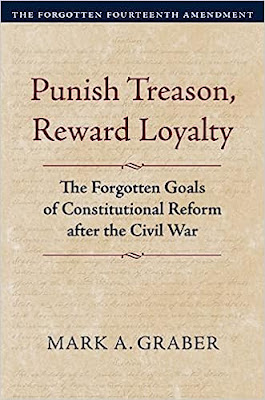
Mark A. Graber, Punish Treason, Reward Loyalty: The Forgotten Goals of Constitutional Reform after the Civil War (University of Kansas Press, 2023)
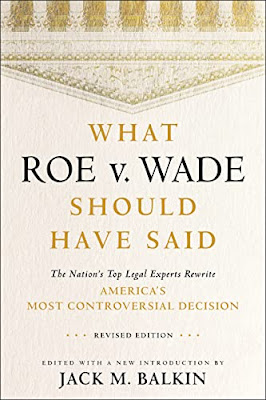
Jack M. Balkin, What Roe v. Wade Should Have Said: The Nation's Top Legal Experts Rewrite America's Most Controversial Decision - Revised Edition (NYU Press, 2023)

Andrew Koppelman, Burning Down the House: How Libertarian Philosophy Was Corrupted by Delusion and Greed (St. Martin’s Press, 2022)

Gerard N. Magliocca, Washington's Heir: The Life of Justice Bushrod Washington (Oxford University Press, 2022)
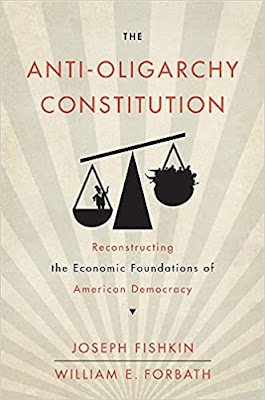
Joseph Fishkin and William E. Forbath, The Anti-Oligarchy Constitution: Reconstructing the Economic Foundations of American Democracy (Harvard University Press, 2022)
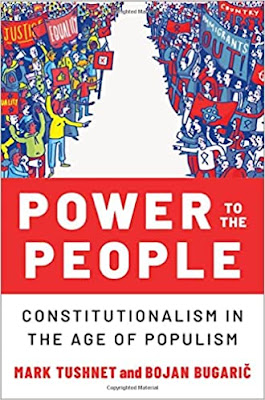
Mark Tushnet and Bojan Bugaric, Power to the People: Constitutionalism in the Age of Populism (Oxford University Press 2021).

Mark Philip Bradley and Mary L. Dudziak, eds., Making the Forever War: Marilyn B. Young on the Culture and Politics of American Militarism Culture and Politics in the Cold War and Beyond (University of Massachusetts Press, 2021).

Jack M. Balkin, What Obergefell v. Hodges Should Have Said: The Nation's Top Legal Experts Rewrite America's Same-Sex Marriage Decision (Yale University Press, 2020)

Frank Pasquale, New Laws of Robotics: Defending Human Expertise in the Age of AI (Belknap Press, 2020)

Jack M. Balkin, The Cycles of Constitutional Time (Oxford University Press, 2020)

Mark Tushnet, Taking Back the Constitution: Activist Judges and the Next Age of American Law (Yale University Press 2020).

Andrew Koppelman, Gay Rights vs. Religious Liberty?: The Unnecessary Conflict (Oxford University Press, 2020)

Ezekiel J Emanuel and Abbe R. Gluck, The Trillion Dollar Revolution: How the Affordable Care Act Transformed Politics, Law, and Health Care in America (PublicAffairs, 2020)

Linda C. McClain, Who's the Bigot?: Learning from Conflicts over Marriage and Civil Rights Law (Oxford University Press, 2020)
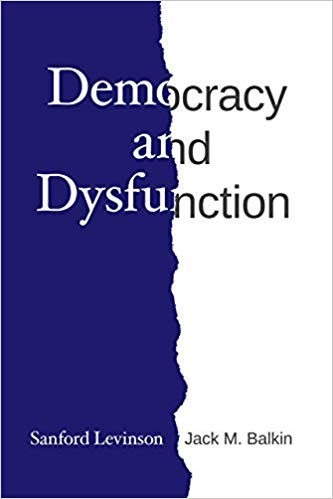
Sanford Levinson and Jack M. Balkin, Democracy and Dysfunction (University of Chicago Press, 2019)

Sanford Levinson, Written in Stone: Public Monuments in Changing Societies (Duke University Press 2018)

Mark A. Graber, Sanford Levinson, and Mark Tushnet, eds., Constitutional Democracy in Crisis? (Oxford University Press 2018)

Gerard Magliocca, The Heart of the Constitution: How the Bill of Rights became the Bill of Rights (Oxford University Press, 2018)

Cynthia Levinson and Sanford Levinson, Fault Lines in the Constitution: The Framers, Their Fights, and the Flaws that Affect Us Today (Peachtree Publishers, 2017)

Brian Z. Tamanaha, A Realistic Theory of Law (Cambridge University Press 2017)

Sanford Levinson, Nullification and Secession in Modern Constitutional Thought (University Press of Kansas 2016)

Sanford Levinson, An Argument Open to All: Reading The Federalist in the 21st Century (Yale University Press 2015)

Stephen M. Griffin, Broken Trust: Dysfunctional Government and Constitutional Reform (University Press of Kansas, 2015)

Frank Pasquale, The Black Box Society: The Secret Algorithms That Control Money and Information (Harvard University Press, 2015)

Bruce Ackerman, We the People, Volume 3: The Civil Rights Revolution (Harvard University Press, 2014)
Balkinization Symposium on We the People, Volume 3: The Civil Rights Revolution

Joseph Fishkin, Bottlenecks: A New Theory of Equal Opportunity (Oxford University Press, 2014)

Mark A. Graber, A New Introduction to American Constitutionalism (Oxford University Press, 2013)

John Mikhail, Elements of Moral Cognition: Rawls' Linguistic Analogy and the Cognitive Science of Moral and Legal Judgment (Cambridge University Press, 2013)

Gerard N. Magliocca, American Founding Son: John Bingham and the Invention of the Fourteenth Amendment (New York University Press, 2013)

Stephen M. Griffin, Long Wars and the Constitution (Harvard University Press, 2013)

Andrew Koppelman, The Tough Luck Constitution and the Assault on Health Care Reform (Oxford University Press, 2013)

James E. Fleming and Linda C. McClain, Ordered Liberty: Rights, Responsibilities, and Virtues (Harvard University Press, 2013)
Balkinization Symposium on Ordered Liberty: Rights, Responsibilities, and Virtues

Andrew Koppelman, Defending American Religious Neutrality (Harvard University Press, 2013)

Brian Z. Tamanaha, Failing Law Schools (University of Chicago Press, 2012)

Sanford Levinson, Framed: America's 51 Constitutions and the Crisis of Governance (Oxford University Press, 2012)

Linda C. McClain and Joanna L. Grossman, Gender Equality: Dimensions of Women's Equal Citizenship (Cambridge University Press, 2012)

Mary Dudziak, War Time: An Idea, Its History, Its Consequences (Oxford University Press, 2012)

Jack M. Balkin, Living Originalism (Harvard University Press, 2011)

Jason Mazzone, Copyfraud and Other Abuses of Intellectual Property Law (Stanford University Press, 2011)

Richard W. Garnett and Andrew Koppelman, First Amendment Stories, (Foundation Press 2011)

Jack M. Balkin, Constitutional Redemption: Political Faith in an Unjust World (Harvard University Press, 2011)

Gerard Magliocca, The Tragedy of William Jennings Bryan: Constitutional Law and the Politics of Backlash (Yale University Press, 2011)

Bernard Harcourt, The Illusion of Free Markets: Punishment and the Myth of Natural Order (Harvard University Press, 2010)

Bruce Ackerman, The Decline and Fall of the American Republic (Harvard University Press, 2010)
Balkinization Symposium on The Decline and Fall of the American Republic

Ian Ayres. Carrots and Sticks: Unlock the Power of Incentives to Get Things Done (Bantam Books, 2010)

Mark Tushnet, Why the Constitution Matters (Yale University Press 2010)
Ian Ayres and Barry Nalebuff: Lifecycle Investing: A New, Safe, and Audacious Way to Improve the Performance of Your Retirement Portfolio (Basic Books, 2010)
.jpg)
Jack M. Balkin, The Laws of Change: I Ching and the Philosophy of Life (2d Edition, Sybil Creek Press 2009)

Brian Z. Tamanaha, Beyond the Formalist-Realist Divide: The Role of Politics in Judging (Princeton University Press 2009)
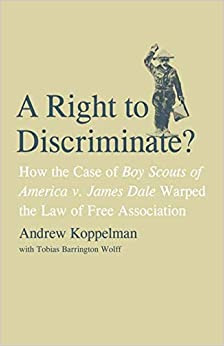
Andrew Koppelman and Tobias Barrington Wolff, A Right to Discriminate?: How the Case of Boy Scouts of America v. James Dale Warped the Law of Free Association (Yale University Press 2009)

Jack M. Balkin and Reva B. Siegel, The Constitution in 2020 (Oxford University Press 2009)
Heather K. Gerken, The Democracy Index: Why Our Election System Is Failing and How to Fix It (Princeton University Press 2009)

Mary Dudziak, Exporting American Dreams: Thurgood Marshall's African Journey (Oxford University Press 2008)

David Luban, Legal Ethics and Human Dignity (Cambridge Univ. Press 2007)

Ian Ayres, Super Crunchers: Why Thinking-By-Numbers is the New Way to be Smart (Bantam 2007)

Jack M. Balkin, James Grimmelmann, Eddan Katz, Nimrod Kozlovski, Shlomit Wagman and Tal Zarsky, eds., Cybercrime: Digital Cops in a Networked Environment (N.Y.U. Press 2007)

Jack M. Balkin and Beth Simone Noveck, The State of Play: Law, Games, and Virtual Worlds (N.Y.U. Press 2006)

Andrew Koppelman, Same Sex, Different States: When Same-Sex Marriages Cross State Lines (Yale University Press 2006)
Brian Tamanaha, Law as a Means to an End (Cambridge University Press 2006)
Sanford Levinson, Our Undemocratic Constitution (Oxford University Press 2006)
Mark Graber, Dred Scott and the Problem of Constitutional Evil (Cambridge University Press 2006)
Jack M. Balkin, ed., What Roe v. Wade Should Have Said (N.Y.U. Press 2005)
Sanford Levinson, ed., Torture: A Collection (Oxford University Press 2004)
Balkin.com homepage
Bibliography
Conlaw.net
Cultural Software
Writings
Opeds
The Information Society Project
BrownvBoard.com
Useful Links
Syllabi and Exams